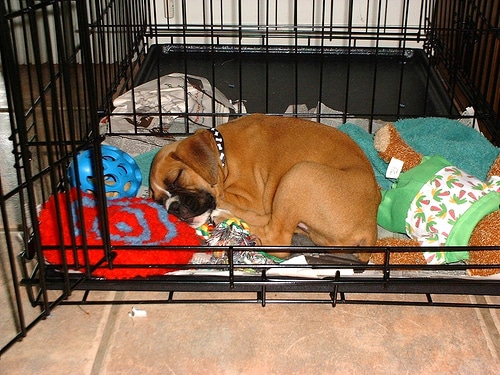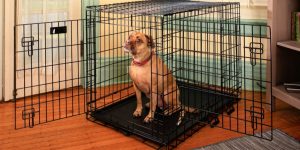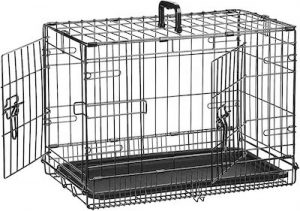Welcoming a new puppy or dog into your home is an exciting and heartwarming experience. As a responsible pet owner, crate training is one of the most important things we must provide to our doggo.
It’s a valuable tool for potty training and a safe and comfortable space for your pet to retreat to when needed. So, how do you do it?
Let’s begin right away. First, you must prepare everything you need before we begin the training.
How to prepare for crate training?
- Choose a sturdy and well-ventilated metal, plastic, or fabric crate, depending on your pet’s needs and preferences.
- Place the crate in a common area of the house where your family spends time, making it a part of their daily environment.
- Add soft bedding, toys, and treats inside the crate to create a positive association with the space.
- Keep the crate door open initially, allowing your puppy or dog to explore and enter the crate at their own pace.
- Position the crate in a quiet, low-traffic area of your home to create a den-like space where your pet can relax and feel secure.
- Ensure the crate is clean and inviting, making it a welcoming space for your puppy or dog to spend time in.
Step-by-Step Crate Training Guide
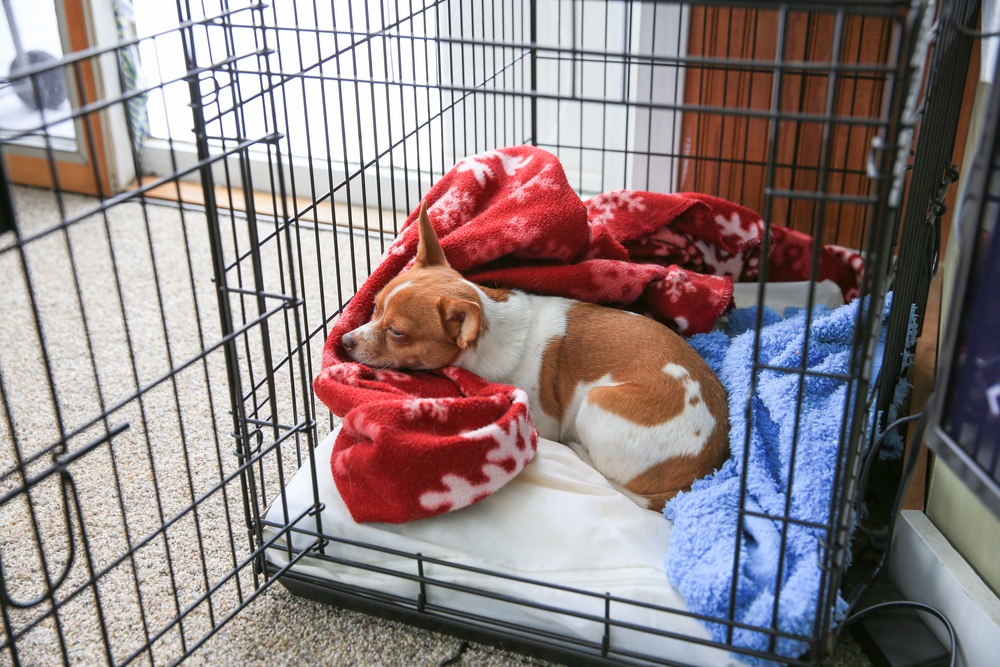
Crate training your puppy or dog can be a rewarding experience for both of you. Let’s dive into the step-by-step guide you can follow.
Step 1: Choose the right crate for your dog.
Your dog’s crate should be spacious enough to stand, turn around, and lie comfortably. Avoid choosing a too-large crate, as it may encourage accidents inside.
Read More: What size dog crate do you need? How to choose?
Step 2: Introduction the crate gradually.
Start by placing treats near the crate’s entrance to pique their curiosity. Gradually move the treats inside the crate, encouraging them to step inside. Never force them in; let them explore the crate willingly.
Step 3: Positive reinforcement.
Use positive reinforcement to build a positive connection with the crate. Offer verbal praise and treats whenever your furry friend enters the crate or stays inside. This encourages them to view the crate as a delightful and safe space. Make crate time a positive experience; they’ll willingly go inside when needed.
Step 4: Make mealtime an enjoyable in-crate experience.
Place your dog’s food bowl near the crate and gradually move it inside over time. They’ll associate the crate with a pleasant dining spot. Feeding them inside the crate also helps create a positive bond with the space.
Step 5: Alone time in the crate.
Begin by leaving them in the crate for short periods while you’re still present in the room. Gradually increase the time you leave them alone, step by step.
This gradual approach prevents anxiety and helps them feel secure in the crate.
Step 6: Gradual confinement.
As your puppy or dog becomes comfortable with the crate, gradually confine them for short periods when you’re away.
Avoid making a big fuss when you leave or return, as this can create unnecessary anxiety. Instead, keep departures and arrivals low-key to promote a sense of normalcy.
Read More: Beginner’s Guide to Top 5 Dog Crates in the UK (July 2023)
What mistakes should you avoid while crate training?
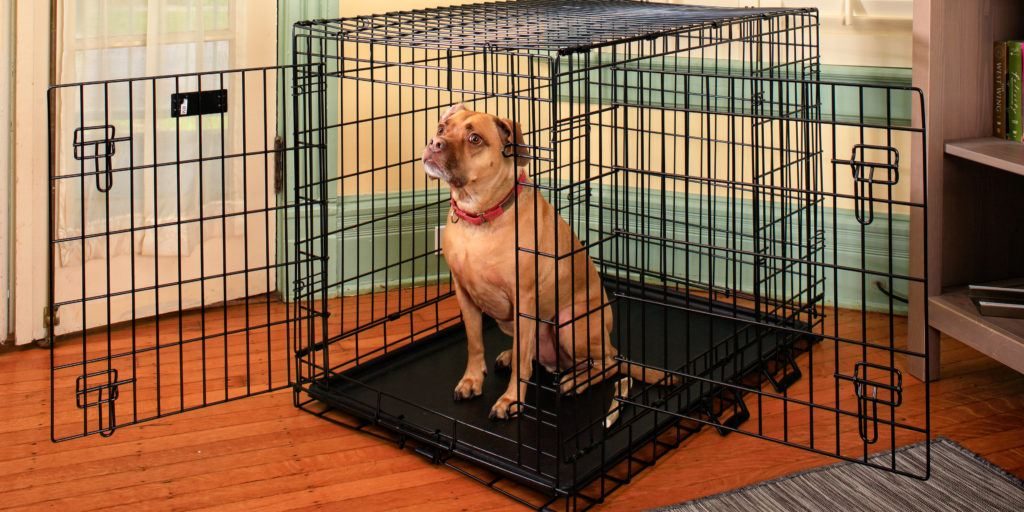
1. Punishment: Never use the crate as a punishment; it should always be associated with positivity.
2. Extended Confinement: Don’t leave your dog in the crate for extended periods; provide regular breaks for exercise and potty time.
3. Ignoring Distress: If your dog shows signs of distress or anxiety in the crate, don’t ignore them. Gradually increase crate time at their comfort level.
3. Overuse: While useful for training and safety, don’t rely on the crate as the only solution for behavioural issues; consider professional training if needed.
5. Leaving Collar and Tags: Remove your dog’s collar and tags when they’re in the crate to prevent any accidental entanglement.
Frequently Asked Questions (FAQs)
1. How early should you crate-train a puppy?
The ideal time to start crate training a puppy is when you bring them home, usually around 8 to 12 weeks. Early crate training allows your puppy to adapt quickly and build positive associations with the crate. Remember, patience and consistency are key to successful crate training.
2. Is it OK to let a puppy cry in a crate at night?
While it’s normal for a puppy to whine or cry, leaving them alone excessively can lead to anxiety and negative associations with the space. Instead, try to comfort your puppy with soothing words and gentle reassurance. You could also place their crate close to your bed during the night.
Read More: How to help your dog cry less in its crate?
3. Does putting a blanket over a dog crate help?
Generally, covering the crate with a light, breathable blanket or crate cover can help create a cosy and den-like atmosphere, making your dog feel secure and relaxed. Dogs, by nature, appreciate enclosed spaces, and covering the crate can provide them with a sense of privacy and safety.
4. How long can you leave a 12-week-old puppy alone in a crate?
At 12 weeks old, a puppy can hold their bladder for about 3 to 4 hours daily. However, it’s essential to gradually build up crate time and never leave your puppy alone for extended periods. When leaving them in the crate, provide some toys and safe chew treats to keep them occupied.
For longer durations, arrange for a trusted friend or dog sitter to take them out for bathroom breaks and playtime. Always prioritise your puppy’s well-being and ensure plenty of social interaction and exercise throughout the day.
